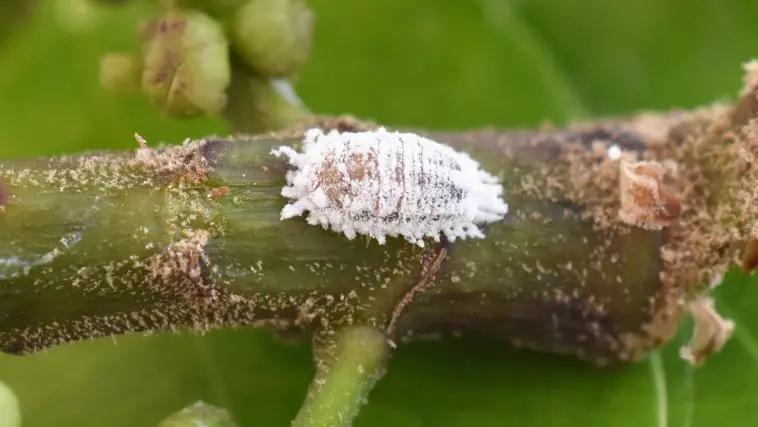[Originally published in 2013 as Another Example of Three-Way Mutualism]
I am fascinated by the phenomenon of symbiosis: two or more species living together in a relationship. In my opinion, the most interesting form of symbiosis is mutualism: two or more species living together in such a way that each species benefits. I personally think it is a picture of what creation was like before the Fall.
As scientists have studied mutualism over the years, they have found some really complex examples. In the past, I wrote about a three-way mutualistic relationship that exists between a grass, a fungus, and a virus. Later on, I wrote about a three-way mutualistic relationship that exists between seagrasses, clams, and bacteria.
Well, I just learned about another example of a three-way mutualistic relationship. Scientists have known about it for more than a decade, but it was the subject of a recent study that came to some rather startling conclusions.
Mealybug Superhost
The biggest member of this relationship is the mealybug, which is shown above. It feeds on the sap of plants, but that presents a bit of a problem. To make all the proteins it needs to survive, the mealybug must have certain amino acids at its disposal. It can get some of them from its diet, but plants don’t make all the amino acids that the mealybug needs. As a result, it must manufacture some of them. By itself, however, it can’t get the job done. It can make some of the chemicals that are necessary to produce the amino acids, but it can’t make them all. If left on its own, the mealybug could not survive.
In 2001, Carol von Dohlen and her colleagues demonstrated that the mealybug has help in making those amino acids. A bacterium, Tremblaya princeps, lives in the mealybug, and it helps the mealybug make the amino acids it can’t get from its diet. However, the bacterium can’t do that job on its own. As a result, a smaller bacterium, Moranella endobia, lives inside it. Together, these two bacteria make the chemicals that the mealybug needs but cannot make itself. All three species are needed in order for the mealybug to survive.1
So here’s the arrangement: a bacterium inside a bacterium inside a bug. It reminds me of an exchange from one of my favorite Dr. Who episodes:
Lily:Where are we?
The Doctor:In a forest, in a box, in a sitting room. Pay attention!”
Now here’s why I learned about this amazing relationship. I ran across a study published this year in the journal Cell2. It analyzed the genetics behind this relationship, and they are truly astounding.
First, the article informs the reader that despite its size, the larger bacterium in the relationship (Tremblaya princeps) has the smallest genome of all known bacteria. It has only 120 genes in a genome that consists of only 139,000 base pairs. The smaller bacterium in the relationship (Moranella endobia) has a larger genome — 406 genes in a genome that consists of 538,000 base pairs. By way of comparison, one of the most common bacteria studied, Escherichia Coli, has 4,200 genes in a genome that consists of 4,600,000 base pairs.3
Why do these two bacteria have such small genomes? Because they don’t have to perform all the functions of life. They live inside the mealybug, receiving both food and housing. As a result, they don’t need to do all the things that free-living bacteria (like Escherichia Coli) do. They just need to help the mealybug make its amino acids and eat the food that the mealybug provides for them.
Since the authors believe in evolution, they think that these bacteria were probably once free-living but were incorporated into the mealybug millions of years ago. At that time, the story goes, their genomes were a lot larger. However, as the relationship between the three species evolved, the two bacteria began losing a lot of the genes they didn’t need. That’s why their genomes are so small today — evolution removed most of the unnecessary genes.
Here’s the problem, though: if so, evolution also removed some of the necessary genes! The genomes of these two bacteria don’t make everything they need, even after considering what the mealybug does for them.
So how do the two bacteria survive?
The mealybug has the extra genes they need.
The authors first thought that perhaps in the course of evolution, the bacteria transferred those genes to the mealybug. However, their analysis doesn’t support that idea. They found 22 genes (actually, they say there may be more) in the mealybug that resemble bacterial genes, and the majority of them are necessary for the survival of the two bacteria that live inside it.
However, none of those genes have the sequences you would expect if they came from those two bacteria! Instead, they have sequences that are similar to other species of bacteria.
So how do the authors explain this?
They think that as the relationship between these three species was evolving, the two bacteria lost the genes they didn’t need, but they hung on to the genes that they did need. At one time, then, the two bacteria had the 22 bacterial genes that are now in the mealybug’s genome. However, over the course of time, the mealybug was infected by other bacteria, and during those infections, these other bacteria transferred the 22 genes to the mealybug. Once the mealybug had those genes, the two bacteria living inside the mealybug were free to lose them.
In my mind, there is a more reasonable explanation. The mealybug has always been designed to live with these bacteria. As a result, its genome was created with some genes that the bacteria need, and the bacteria were created with some genes that they need. In my mind, this gets rid of the need to believe in unlikely events. After all, how likely is it that an infecting bacterium would just happen to transfer a gene to the mealybug that its mutualistic bacteria need? Furthermore, how likely is it for that to happen at least 22 times?
As I have stated before, I think the best explanation for bacteria and viruses is that they were created to live in relationships with other organisms, allowing those organisms to have access to the rich chemistry that is available from the surroundings. The mutualism we see today is a reflection of that.
Once the Fall happened, however, some of the mutualistic bacteria and viruses were subject to mutations, and they eventually mutated to the point where they lost their ability to help other organisms. As a result, they became pathogenic.
I think the more we investigate mutualism, the clearer this will become.
References
- CD von Dohlen, S Kohler, ST Alsop, anhd WR McManus, “Mealybug beta-proteobacterial endosymbionts contain gamma-proteobacterial symbionts,” Nature 412:433-6, 2001
- Filip Husnik, Naruo Nikoh, Ryuichi Koga, Laura Ross, Rebecca P. Duncan, Manabu Fujie, Makiko Tanaka, Nori Satoh, Doris Bachtrog, Alex C.C. Wilson, Carol D. von Dohlen, Takema Fukatsu, and John P. McCutcheon, “Horizontal Gene Transfer from Diverse Bacteria to an Insect Genome Enables a Tripartite Nested Mealybug Symbiosis,” Cell 153:1567–1578, 2013
- Leon E. Rosenberg and Diane Drobnis Rosenberg, Human Genes and Genomes: Science, Health, Society, Academic Press 2012, p. 95







